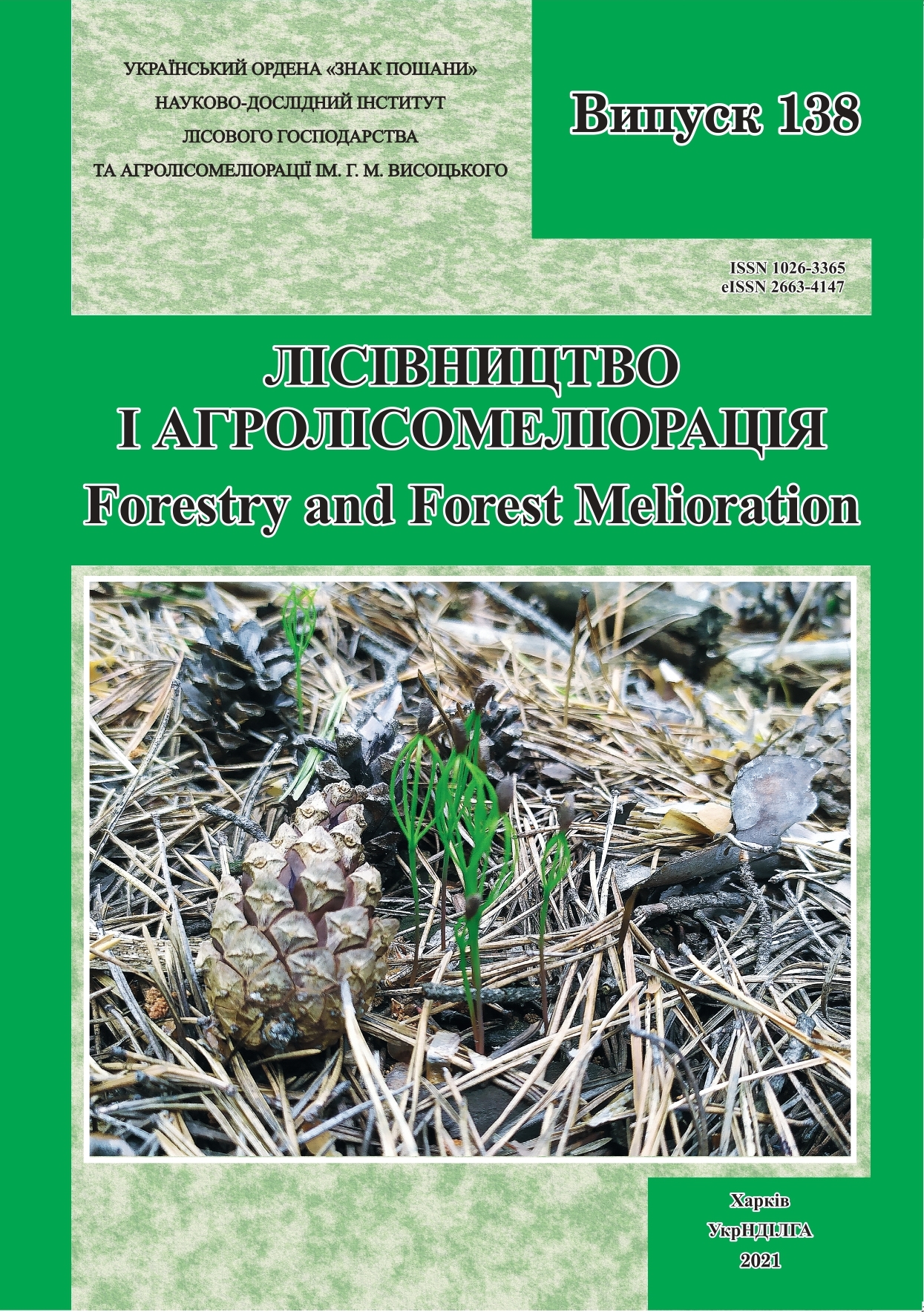Abstract
Introduction
Recently, in pine forests of many regions, the outbreak of bark beetles, particularly Ips sexdentatus (B?rner, 1776) (Coleoptera: Curculionidae: Scolytinae) have been registered. Prevention of outbreaks and decrease of the negative consequences for forest can be achieved by the use of fertilizers, insecticides, and entomophages. Thanasimus formicarius (Linnaeus 1758) (Coleoptera: Cleridae) is a predator of many coleopterous species.
The aim of the research was to evaluate the first results of the release of Th. formicarius into the foci of bark beetles.
Materials and Methods
The study was carried out in the foci of bark beetles in Kharkiv, Sumy, and Chernigiv regions. The larvae of Th. formicarius were reared in the State Specialized Forest Protection Enterprise ‘Kharkivlisozahyst’. After that, they were moved to the forest and released. The experiment was carried out with five variants of application the fertilizer and predator, one variant of predator release without fertilizer, one variant of the fertilizer ‘Iaros’ treatment without predator release, and one variant without any treatment. The control plots were of three types: K-1 – release of predator larvae without applying a fertilizer; K-2 – treatment with fertilizer without the release of predator; K-3 – without treatment with fertilizer and without the release of predator. The change in the health condition of trees and bark beetles’ survival were the criteria for evaluating the treatment effectiveness.
Results and Conclusions
The efficiency of different combinations of treatment with fertilizer and the release of the predator, evaluated by the change of the health condition of viable trees, was from 14.7 to 28.3%. According to the 2020 assessment, the density of larval galleries of the bark beetle decreased in all plots compared to 2018. The more rapid collapse of bark beetle outbreak as compared to the control was registered for the plots with predator release. The release of the predator along with the use of mineral fertilizer by spraying the crowns provided a more significant improvement in the stand health condition and a decrease in the viability of the bark beetle populations than the only predator release.

This work is licensed under a Creative Commons Attribution 4.0 International License.
